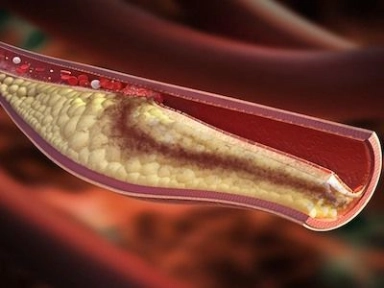Duration of thromboprophylaxis following major abdominopelvic cancer-related surgery
Duration of thromboprophylaxis following major abdominopelvic cancer-related surgery – an aid to informed clinical decisionmaking
Key Takeaway
Decision on use of extended duration thromboprophylaxis following major abdominopelvic cancer surgery should be made on individual patient basis.* Post-abdominopelvic cancer surgery:
Extended duration LMWH thromboprophylaxis vs standard duration:
Significantly reduces 30-day incidence of clinical VTE. No significant increase in 30-day post-operative incidences of clinically relevant bleeding
Risk prediction:
In the post-operative period, risk prediction scores like the Caprini score are not used regularly in clinical practice to decide the duration of thromboprophylaxis.
Why This Matters
Risk of post-operative VTE is 2-fold higher and risk of fatal PE is 3-fold higher in patients with cancer vs those undergoing similar surgical procedures for benign disease:
In patients with cancer undergoing abdominopelvic surgery, VTE was noted as the greatest cause of 30-day post-operative mortality
This systematic review and meta-analysis:
Provides clinicians with event rates of symptomatic VTE and clinically relevant bleeding for shared decisionmaking on the duration of thromboprophylaxis in surgical cancer patients
Key Highlights
Systematic Review and Meta-Analysis:
68 Studies (9 RCTS and 59 Observational Studies): 1,631,118 Adult Patients Who Underwent Cancer-Related Abdominopelvic Surgery
|
30-Day post-operative incidences† |
|||
| Overall rate | With extended duration Thromboprophylaxis vs without |
Extended duration Thromboprophylaxis vs standard |
|
| RCTs | Observational studies |
||
| 1.7% (95% CI: 1.5–1.9) |
0.5% vs 1.8% (95% CI: 0.2–0.9) vs (95% CI: 1.3–2.4) |
Non significant reduction 0.3% vs 1.4% (RR: 0.33) |
Statistically significant reduction 1.0% vs 2.1% (RR: 0.48) |
| 30-Day post-operative incidences† of clinically-relevant bleeding complications |
|||
| Overall rate | With extended duration Thromboprophylaxis vs without |
Extended duration Thromboprophylaxis vs standard |
|
| RCTs | Observational studies |
||
| 3.5% (95% CI: 1.6–6.1) |
2.4% vs 3.5% (95% CI: 0.9–4.7) vs (95% CI: 2.0–5.4) |
Non significant reduction 2.4% vs 2.0% (RR: 1.2) |
Statistically significant reduction 4.0% vs 4.9% (RR: 1.0) |
Including observational studies in this systematic review, may be more representative of current clinical practice and better capture the real-world effectiveness of LMWH prophylaxis by including a much broader patient population.
30-day event rates remain important information to establish risk-benefit ratio on the duration of thromboprophylaxis for adult patients who underwent abdominopelvic cancer surgery.
Study findings suggest:
- Although, extended duration thromboprophylaxis reduces VTE risk, the absolute clinical benefit of reduction in symptomatic VTE events is relatively low
Limitations
Possibility of bias‡ due to inclusion of observational studies and RCTs together with studies reporting of asymptomatic events
High levels of statistical heterogenecity§ in the pooled analysis
Absence of detailed description of patient population or procedures performed in most studies
The rates of fatal pulmonary embolism were not consistently reported and could not be assessed with the meta-analysis.
* Based on underlying risk of bleeding, costs and patient's values and preferences.
† Subgroup analysis of VTE incidence data from the American College of Surgeons National Surgical Quality Improvement Program (NSQIP) have not been provided as they did not report on thromboprophylaxis.
‡ Selection bias, confounding and misdiagnosis bias.
§ With respect to different cancer types, modes of surgical intervention and type/dose/duration of thromboprophylaxis.
CI, confidence interval; ED, extended duration; LMWH, low molecular weight heparin; PE, pulmonary embolism; RCTs, randomized controlled trials; RR, risk ratio; SD, standard duration; VTE, venous thromboembolism
- Knoll W, Fergusson N, Ivankovic V, Wang TF, Caiano L, Auer R, et al. Extended thromboprophylaxis following major abdominal/pelvic cancer-related surgery: A systematic review and meta-analysis of the literature. Thromb Res. 2021;204:114–122. doi:10.1016/j.thromres.2021.06.010. PMID: 34175749.




